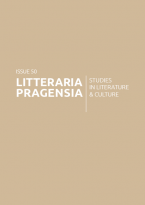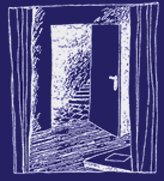
|
25.50 Irish Theatre & Central EuropeEdited by: Ondřej Pilný Volume: 25 Issue: 50 December 2015 |
Contents
|
Ondřej Pilný
Irish Theatre and Central Europe: Introduction
|
1 |
|
Barry Keane
Never Quite There: Irish Plays in Poland, 1955-1999
show abstract
This article assesses Irish drama’s impact on Poland’s theatrical world from the mid- to late twentieth century. In spite of the anticipation on the part of audiences and critics at the prospect of witnessing a spectacle which could potentially celebrate the fraternal cultures of both Poland and Ireland, very often the same productions only served to confirm that perceptions of national affinity and empathy were somewhat illusory and that the cultural gulf was wider than had previously been thought. What is more, many Irish plays came to Poland years after they had premièred elsewhere, and as a consequence of this tardiness, potential dialogue about contemporary issues common to both countries was undermined almost from the outset.
|
8 |
|
Michał Lachman
Disappearing Nation, or Irish Theatre's Rules of Export
show abstract
Since the dawn of the Celtic Tiger Irish drama has been increasingly seen as a marketable product which plays a vital role in the country’s cultural industry. Research projects such as The Irish Theatrical Diaspora point to the need of studying "the circulation of theatre into and out of as well as within Ireland." However, there is no certainty that what leaves the country as a recognizably Irish product reaches its destination as such. This issue concerns in particular Irish drama produced by non-Irish companies. The aim of this article is to describe what happens to various markers of Irish identity in plays produced in Polish theatres as well as in reviews written about them. In other words, how Irishness is read and how it is used to attract the interest of Polish audiences. The article covers a wide range of Polish productions of Irish drama. Along with the analysis of individual examples of productions as well as looking at reviewers’ comments regarding the Irishness of Polish attempts to stage Irish authors, the article also discusses more general matters of national identity and globalization.
|
16 |
|
Kasia Lech
Difficult Encounter: Polish Theatre on the Irish Stage between 2004 and 2015
show abstract
Ten years after Poland has joined the European Union and thousands of Poles arrived in Ireland, has Polish theatre arrived on the Irish stage? The fate of Polish theatre in Ireland has been varied, from Natalia Korczakowska's The Leash performed and awarded at the 2007 Dublin Fringe Festival, Krystian Lupa's Factory 2 (Dublin Theatre Festival 2010) described by Sara Keating as a "deliberately indulgent and maddening performance" that was simply boring, to Polish Theatre Ireland's Bubble Revolution (2013) praised for performance and critiqued for lack of clarity. This essay seeks to document the last decade and investigates the reception of professional Polish productions created both in Poland and Ireland and presented in Ireland between 2004 and 2015. Choosing the most contrasting cases and taking into account quantitative data as well as reviews, awards and funding, the essay investigates the encounter of Polish theatre with Irish audiences.
|
32 |
|
Dieter Fuchs
The Reception of Synge's and O'Casey's Plays in Vienna from the Fall of the Habsburg Empire to the Summer of '69
show abstract
This article focuses on the reception of Synge's and O'Casey's plays in Vienna from 1917 to 1969. Although the Vienna productions of The Playboy of the Western World (1917 and 1968), Juno and the Paycock (1934), The Silver Tassie (1954), and The Shadow of a Gunman (1969) coincided with important political upheavals in world history, the critical reception tended to decontextualize these theatrical performances from events such as the Russian Revolution, the Austrian Civil War, the Cold War, the Prague Spring of 1968 and the rise of Western counterculture. Rather than noticing the parallel situation of Ireland paralyzed by the father figure of the British King and Austria ruled by a past-ridden autocratic establishment in times of global change, the critical response to these productions emphasized the allegedly strange Irishness of Synge's and O'Casey's plays as a distancing device.
|
47 |
|
Mária Kurdi
Ireland and the Irish on the Hungarian Stage: Recent Productions of Plays from Synge to Friel and Beyond
show abstract
The article focuses on some noteworthy Hungarian productions of drama about Ireland and the Irish from the last decade. The selected examples are discussed in three groups, citing also Hungarian critics' views about the significance of the productions in the enrichment of theatre culture, while certain risks and problems are also pointed out. In the first group, two productions of Synge's The Playboy of the Western World and a production of Friel's Faith Healer are looked at to highlight different approaches to the staging of Irish classics. Considering some re-interpretations of younger Irish playwrights' works, the essay continues addressing the strategies with which Conor McPherson's The Seafarer and Martin McDonagh's The Lonesome West and The Beauty Queen of Leenane (retitled as Poker) were revived in three different theatre venues of Hungary. In the third group, the author discusses experimentation with multimediality and physical theatre in Hungarian productions of Michael West's Freefall and Helen Edmundson's The Clearing. By way of conclusion, the article claims that the Hungarian theatre makers involved in the selected productions were eager to realize certain less overt possibilities in the dramatic texts. While being aware of the plays' reflections on Ireland and Irishness, they were notably challenged to achieve new effects but also remain open to changing their methods.
|
60 |
|
Csilla Bertha
,
Donald E. Morse
Godot Comes to Hungary Via Translation and Acculturation
show abstract
Hungarian translations of Waiting for Godot provide cogent examples of the crucial function of translation in enabling and influencing productions of Irish plays in Central Europe. Breaking through the various obstructions by and objections of the communist political and cultural dictatorship, Waiting for Godot, translated in 1965 from the original French version of 1952, became one of the most frequently produced plays in Hungary during the last third of the twentieth century. A recent excellent new translation that includes numerous Irish references awaits a production, after several staged readings. Beckett’s Godot in translation heavily influenced Hungarian playwrights who drew upon the author and his work for inspiration. Géza Páskándi, They're Waiting for Godot Again (1995), moves Beckett’s characters and their situations into the parallel universe of the absurdoid deep in Central Europe.
|
75 |
|
James Little
Between a Protest and Catastrophe
show abstract
Samuel Beckett's Catastrophe (1982) is protest writing, but not as we know it. It is the only Beckett play dedicated to a political prisoner, thus going against the grain of his efforts both as writer and director to avoid "explicitation" of his work. Because of this, the play remains at the centre of critical debate on the politics of his writing. This article examines the context of Catastrophe's composition and early productions, drawing on evidence from manuscripts as well as correspondence between Beckett and Havel, while also considering Havel's dramatic response to Beckett's play, Chyba [Mistake] (1983), as the kind of representational account of prison brutality that Beckett's writing avoids.
|
92 |
|
Monica Randaccio
Martin Mcdonagh's The Beauty Queen Of Leenane on the Italian Stage: Can the Space of the Irish Dramatic Tradition Be Rewritten?
show abstract
The aim of this article is to show how the translation of The Beauty Queen of Leenane into Italian, La bella regina di Leenane, rewrites the space of the original play. Selected theoretical models of theatre translation are described and re-adapted in order to explain the impact that La bella regina di Leenane, first produced in Italy in 1998, had on the Italian audience. La bella regina di Leenane is analysed in the context of Italian theatre, first on textual level and subsequently on the level of performance. Major adaptive interventions concerning the Hiberno-English and the realia of the original are considered, in the context of the meaning that La bella regina di Leenane acquires in performance, as the recent 'performative turn' in drama translation has emphasized the importance of the various creative and translation options deriving from performance and the transformation of the translator into cultural mediator. Finally, the director's reflections on his work and the critical reception from the Italian national press are used to demonstrate how the space of La bella regina di Leenane was reconfigured for Italian theatregoers.
|
107 |
|
Tilman Raabke
,
László Upor
,
Ondřej Pilný
Not Looking For Irishness
show abstract
Tilman Raabke and László Upor in Conversation with Ondřej Pilný |
120 |


